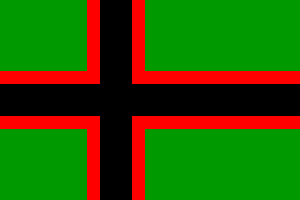KARELIAHistory of the Karelians 12th c - The Karelians fall under the hegemony of feudal Novgorod, they are forced to convert to Russian Orthodoxy; 13-14th c - Karelia becomes the area of conflict between Russians and Swedes, in 1323 the Russian-Swedish border divides the Karelian territory; 1478 - Karelia falls under the hegemony of Moscow; 17th c - Many Karelians migrate from the territories that came under Swedish rule with the Treaty of Stolbovo (1617) to Tver and Novgorod areas in Central Russia and to Northern Karelia; 18th c - Establishment of industrial enterprises with imported workers; Petrozavodsk becomes an important industrial town; Around 1710, tsar Peter the Great of Russia decided to take control of Finland as a way of giving Russia an outlet on the Baltic Sea. By 1716, he had gained his opening on the Baltic Sea, and by 1721, Russia controlled most of Karelia. The struggle for control over the rest of Finland raged on and off throughout the 18th c. At the conclusion of the Russo-Swedish war in 1809, Finland was ceded to Russia. Finnish nationalism had been increasing already under the Swedish rule, but grew strongly under the Russians, as a reaction to russification policies. When the Soviets withdrew from World War I in the wake of the 1917 revolution, Finland declared itself independent with full support of the Allied Powers. The Finland of between the wars included parts of present-day Karelia, namely the Karelian isthmus, and the western shore of Lake Ladoga. The Karelian Labour Commune was formed in 1920, with Finnish as the language of administration and education, in accordance with the Tartu peace agreement. In 1923, Karelia's status was changed to autonomous republic within the USSR - the Karelian ASSR. In the inter-war period, the area was dominated politically by Finnish Communists who had fled to the Karelian Labour commune after Communist lost in the Finnish Civil war in 1918. They recruited communist Finns from diaspora communities in Canada and the United states to come and build socialism in Karelia. By the 1930s, Karelia was dominantly Finnish/Karelian. Stalin began a ruthless purge of Karelian leaders in 1935. By 1938, every trace of Finnish was banned within the Karelian ASSR, and Latin script had been replaced by Cyrillic. 1939 - Elimination of the Tver-Karelian National District; the Karelian-language writings are destroyed. When the Soviet Union went to war and invaded Finland in 1939, Finns and Karelians resisted the aggression. After several months of heroic fighting, they gave in in March 1940. The Soviet Union took back the Karelian isthmus and the western shore of Lake Ladoga, and created the Karelo-Finnish ASSR. The Finns joined the Germans against the Soviet Union in 1941, and liberated Russian-occupied Karelia until 1944. During the Finnish occupation, Finnish was the official language, and remained so also when the Soviets took Karelia back, although publications in Finnish were discouraged. In 1956, the Karelo-Finnish Soviet Socialist Republic was dissolved and replaced again by the Karelian ASSR. Since then, Karelians have been undergoing a rapid assimilation process with the neighbouring Russian community. In 1990, a group calling itself the Karelian republic declared autonomy within the Soviet Union. and in 1991 changed the name to Republic of Karelia. Karelian and Veps were declared official languages. The vast majority of Karelians are bilingual (Karelian and Russian), about 50 percent use Karelian as their native language (1989). Karelian writers write in both Russian and Finnish. In recent years measures have been taken to help revive the national culture. Sources: Norwegian Institute of International Affairs [NUPI] - Centre for Russian Studies | Endangered Uralic PeoplesLinks to external websites about the Karelian people, their land, history, and culture (pages will open in new window):
Endangered Uralic Peoples:
Karelians
    
Photos: M. Pellinen, A. Heikkinen, I. Georgievsky, L. Rautiajnen, M. Kashtanov, N. Korpoussenko, V. Grigoriev, Y. Protasov, A. Krasnikov |





